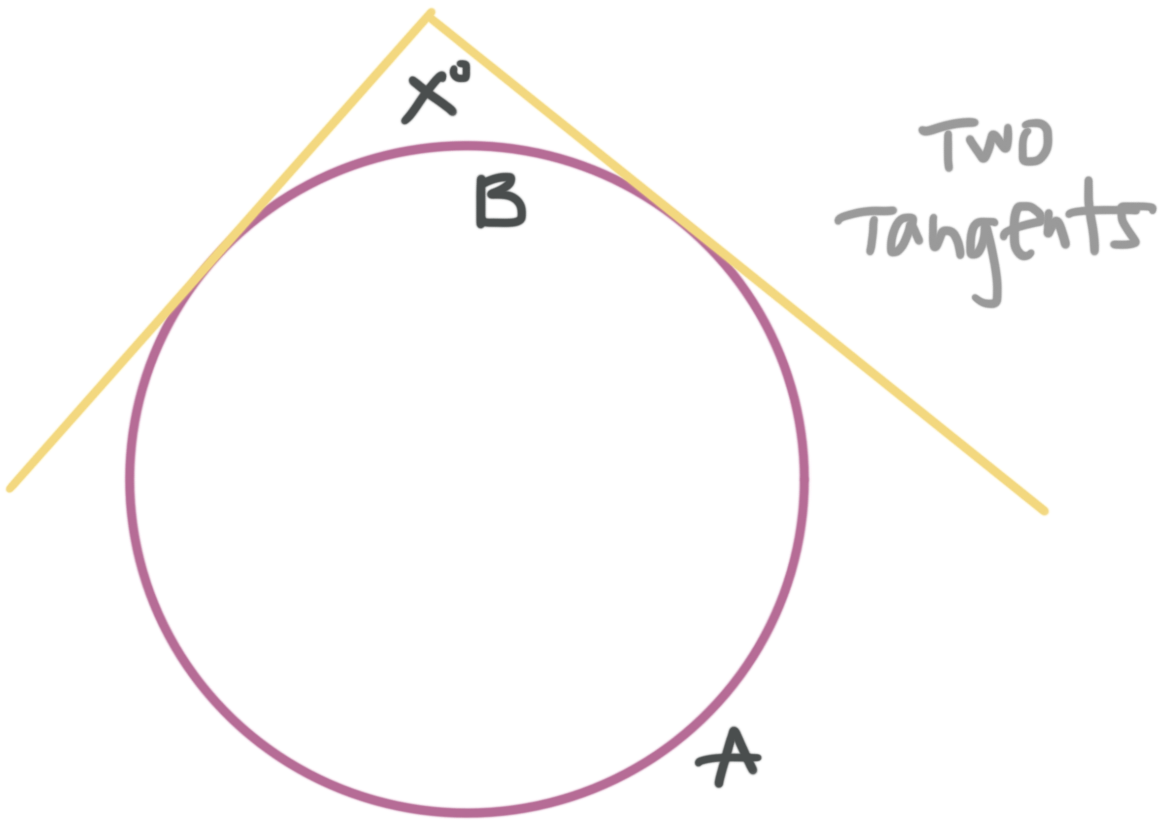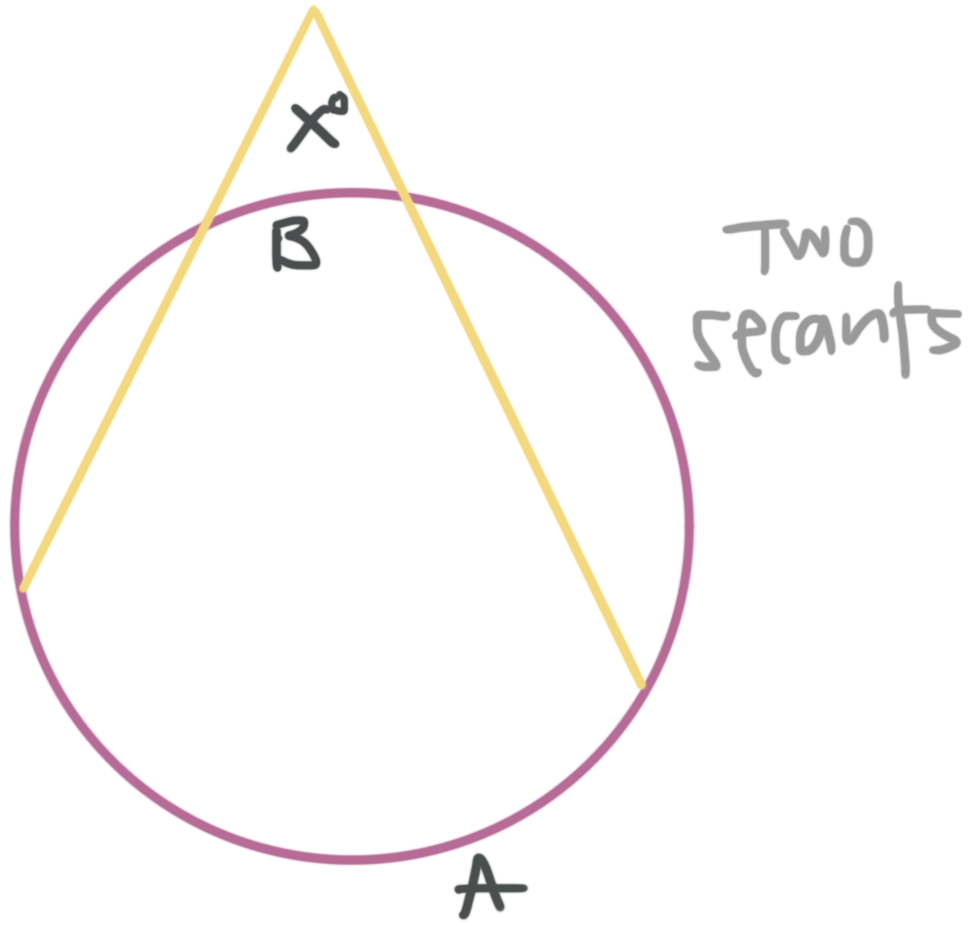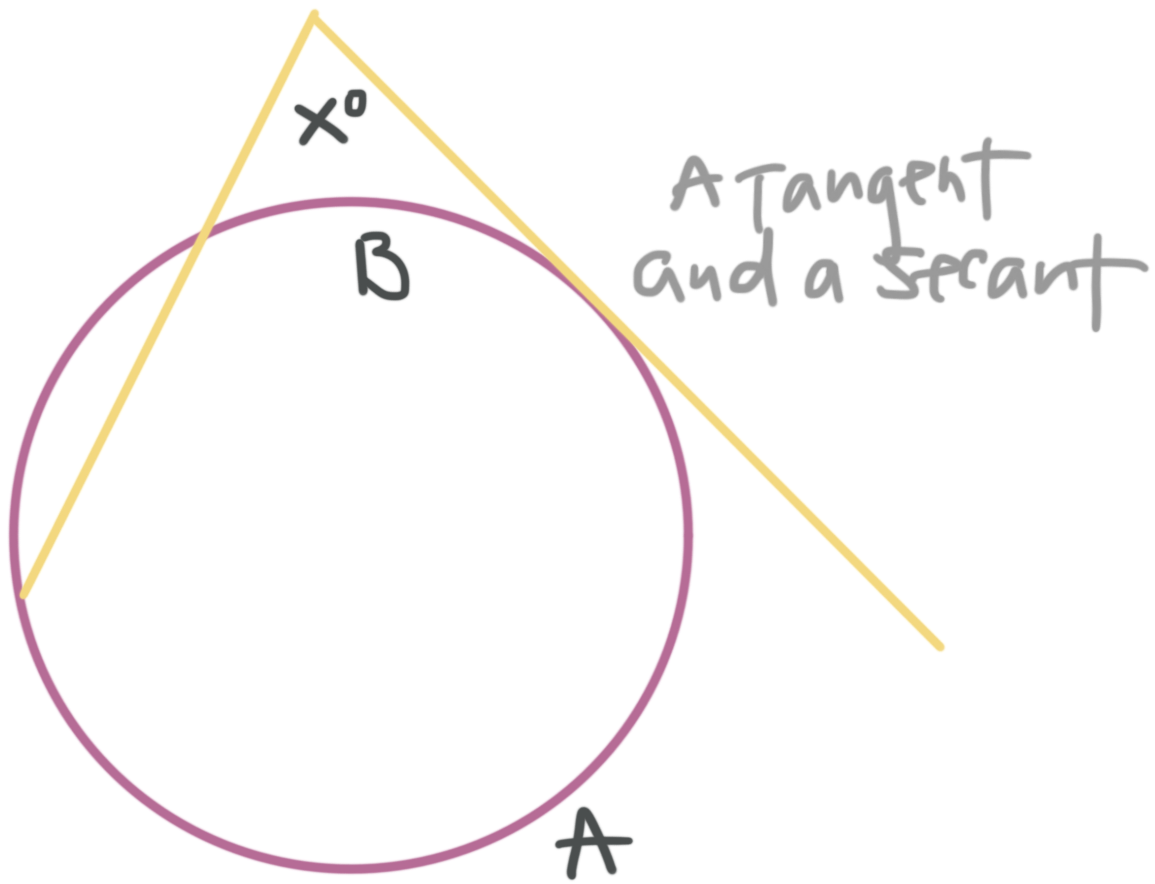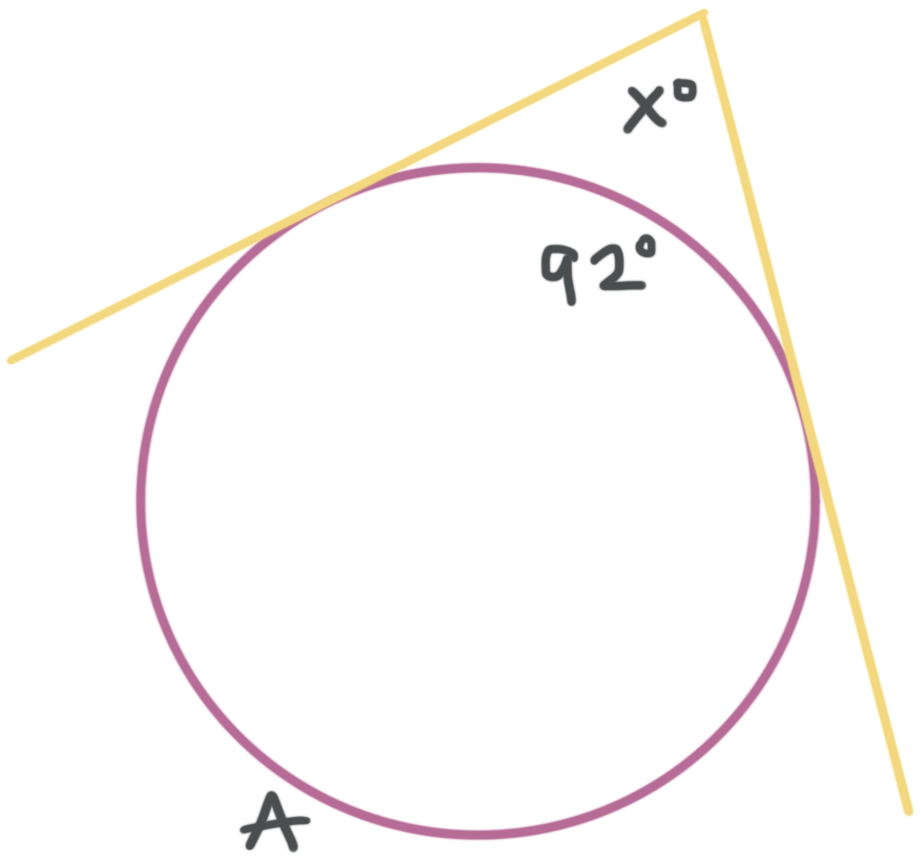Intersecting secant and tangent line with vertices on, inside, or outside the circle
Secant and tangents of circles, and where they intersect in relation to the circle
In this lesson we’ll look at angles whose sides intersect a circle in certain ways and how the measures of such angles are related to the measures of certain arcs of that circle.
Hi! I'm krista.
I create online courses to help you rock your math class. Read more.
As we work through this lesson, remember that a chord of a circle is a line segment that has both of its endpoints on the circle. Besides that, we’ll use the term secant for a line segment that has one endpoint outside the circle and intersects the circle at two points. Finally, we’ll use the term tangent for a line that intersects the circle at just one point.
Here we look at the three possible locations for the vertex of an angle that intersects a circle, together with certain types of geometric figures (chords, secants, tangents) that intersect at the vertex of such an angle and their relationship to certain arcs of the circle.
Vertex inside the circle
When the vertex of the angle is inside the circle, two pairs of vertical angles are formed. We learned about vertical angles formed when a transversal crosses a pair of parallel lines, but actually any pair of angles formed by two lines crossing each other (like the angles of ???x^\circ??? and ???y^\circ??? in the figure below), are vertical angles.
So given vertical angles in the figure below,
we can actually say three things:
???x{}^\circ =y{}^\circ???
???x{}^\circ =\frac{m\text{ arc }{A}+m\text{ arc }{B}}{2}???
???y{}^\circ =\frac{m\text{ arc }{A}+m\text{ arc }{B}}{2}???
Vertex on the circle
When the vertex of the angle is on the circle, at the intersection of two chords, or of one chord and one tangent, the angle is called an inscribed angle. Remember from the last lesson that such an angle has only one intercepted arc, and that the measure of the angle is half the measure of its intercepted arc.
???x{}^\circ =\frac{m\text{ arc }{A}}{2}???
When the vertex of an angle is on the circle and it’s the intersection of one chord and one tangent, it has only one intercepted arc. Such an angle is also considered to be an inscribed angle, and its measure is half the measure of its intercepted arc.
???x{}^\circ =\frac{m\overset\frown{A}}{2}???
Vertex outside the circle
When the vertex of the angle is outside the circle, and at the intersection of two tangents, or of two secants, or of one tangent and one secant, it has two intercepted arcs, and the measure of the angle is half the difference between the measures of its intercepted arcs.
???x^\circ=\frac{m\text{ arc }{A}-m\text{ arc }{B}}{2}???
Intersecting tangents and secants of circles, when the intersection is one the circle, inside the circle, or outside the circle
Take the course
Want to learn more about Geometry? I have a step-by-step course for that. :)
Finding the measure of an arc from secants that intersect on the circle
Example
What is the measure of ???BA????
Arc ???\overset\frown{BA}??? is the intercepted arc of ???\angle BCA???, which is an inscribed angle, so the measure of ???\angle BCA??? is half that ???\overset\frown{BA}???. We know that the measures of the three interior angles of a triangle add to ???180{}^\circ???, so we can find ???m\angle BCA??? and use it to find the measure of ???\overset\frown{BA}???.
???m\angle BCA+72^\circ +49^\circ =180^\circ???
???m\angle BCA+121^\circ =180^\circ???
???m\angle BCA=59^\circ???
And we know that
???m\angle BCA=\frac{1}{2}m\overset\frown{BA}???
So
???2m\angle BCA=m\overset\frown{BA}???
???2(59{}^\circ )=m\overset\frown{BA}???
???118{}^\circ =m\overset\frown{BA}???
Let’s do two more examples.
Example
What is the value of ???x????
The angle measure ???x^\circ??? is the measure of an angle whose vertex is outside the circle and at the intersection of two lines that are tangent to the circle. The measure of such an angle is half the difference between the measures of its intercepted arcs.
We know the measure of one of the intercepted arcs is ???92{}^\circ???, so we need to find the measure of ???\overset\frown{A}???. The measure of a complete circle is ???360{}^\circ???, so we can find the measure of arc ???A??? by subtracting ???92{}^\circ??? from ???360{}^\circ???.
???m\overset\frown{A}=360{}^\circ -92{}^\circ???
???m\overset\frown{A}=268{}^\circ???
Now we can use the measures of the two intercepted arcs to find the value of ???x???.
???x{}^\circ =\frac{268{}^\circ -92{}^\circ }{2}???
???x{}^\circ=\frac{176{}^\circ }{2}???
???x{}^\circ =88{}^\circ???
???x=88???
Let’s try one with a vertex inside the circle.
When the vertex of the angle is outside the circle, and at the intersection of two tangents, or of two secants, or of one tangent and one secant, it has two intercepted arcs, and the measure of the angle is half the difference between the measures of its intercepted arcs.
Example
What is the measure of arc ???A????
We know that when the vertex of an angle is inside the circle, the measure of that angle is half the sum of the arc intercepted by that angle and the arc intercepted by the other angle in the pair.
Here, the arc intercepted by the ???123^\circ??? angle has measure ???158^\circ???, and the arc intercepted by the other angle in the pair of vertical angles is ???\overset\frown{A}???, so we can set up an equation and then solve for ???m\overset\frown{A}???.
???123{}^\circ =\frac{158{}^\circ +m\overset\frown{A}}{2}???
???2(123{}^\circ )=158{}^\circ +m\overset\frown{A}???
???246{}^\circ =158{}^\circ +m\overset\frown{A}???
???m\overset\frown{A}=88{}^\circ???















